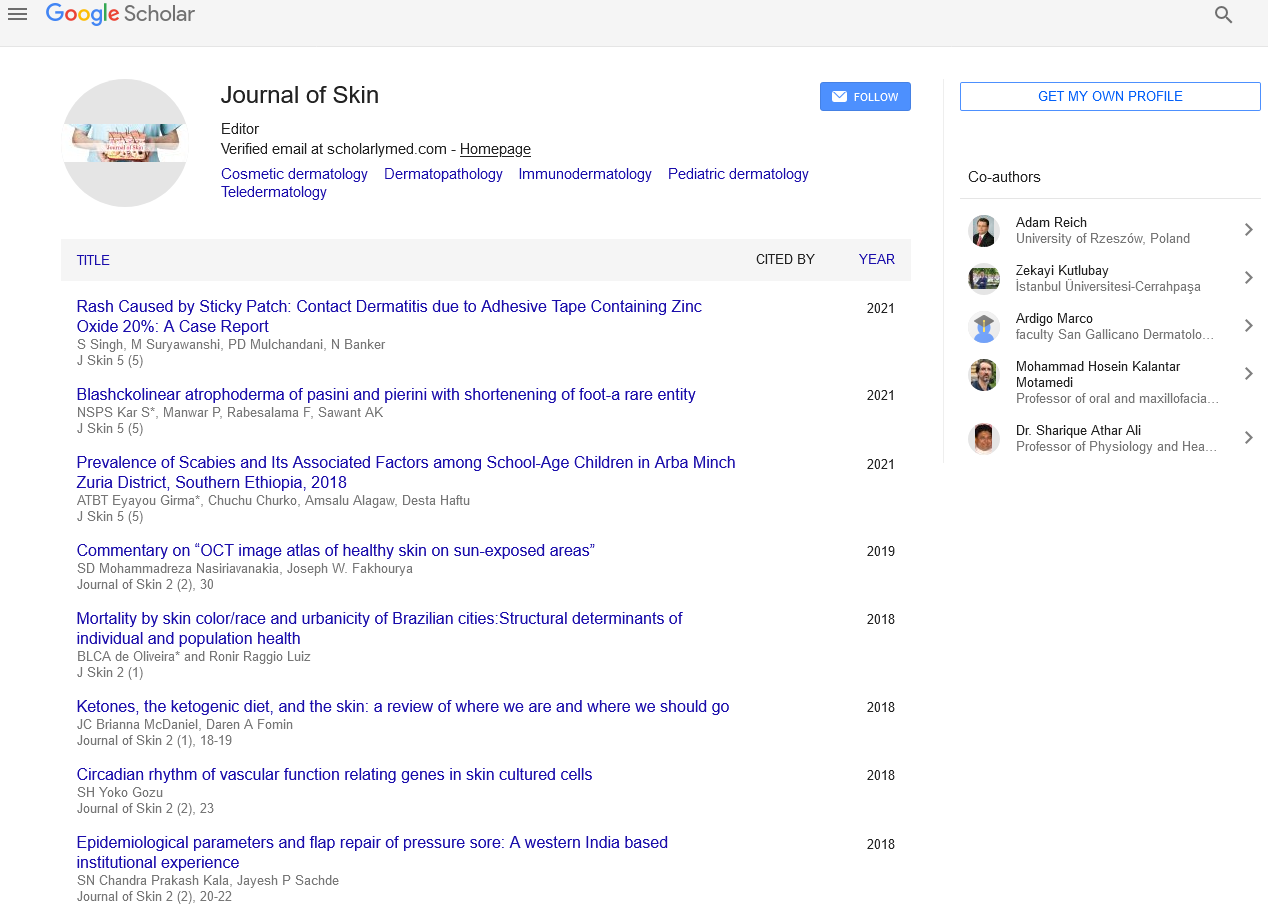Laboratory test for leprosy
Received: 08-Sep-2021 Accepted Date: Sep 22, 2021; Published: 29-Sep-2021
Citation: Malcom D. Laboratory test for leprosy. J Skin.2021;5(4):5.
This open-access article is distributed under the terms of the Creative Commons Attribution Non-Commercial License (CC BY-NC) (http://creativecommons.org/licenses/by-nc/4.0/), which permits reuse, distribution and reproduction of the article, provided that the original work is properly cited and the reuse is restricted to noncommercial purposes. For commercial reuse, contact reprints@pulsus.com
Description
Hansen's disease is another term for leprosy. Mycobacterium leprae, acid-fast, rod-shaped bacillus, induces leprosy, infectious disease. The epidermis, peripheral nerves, upper respiratory tract mucosa, and eyes are all affected by this condition. Leprosy is preventable, and early treatment can help prevent disability. Leprosy primarily affects your skin and peripheral nerves, which are situated near outside of the brain and spinal cord. The eyes and the sensitive tissue lining the inside of the nose may also be negatively affected. Leprosy is distinguished by disfiguring skin lesions, lumps, or bumps that continue for several weeks or months. The lesions on the skin are pale in appearance.
After getting into exposure with the bacteria that causes leprosy, symptoms usually occur after 3 to 5 years. The long onset of symptoms of leprosy makes it difficult for doctors to accurately identify where and when the patient became infected. Leprosy is caused by a bacterium that proliferates slowly. The epidermis and peripheral nerves, which connect the brain and spinal cord to muscles and sensory cells that perceive experiences like touch, pain, and heat, were damaged by leprosy. The majority of people who are affected have skin lesions and problems with nerve function (peripheral neuropathy), but the intensity and extent of the disorders varies greatly. The amount and type of skin sores a person has determines whether or not they have leprosy. The type of leprosy determines the symptoms and treatment options. According to the symptom, there are several varieties of leprosy. Tuberculoid leprosy is a milder, less severe type of the disease. People with this type of skin have only one or a few regions of flat, pale-colored skin (paucibacillary leprosy). The affected area may feel numb as a result of nerve damage beneath the skin. Tuberculoid leprosy is a less contagious kind of leprosy than other types. A more severe type of the disease called lepromatous. It causes extensive skin lumps and rashes, numbness, and muscle weakness (multibacillary leprosy). It's also possible that the nose, kidneys, and male reproductive organs will be influenced. It is more contagious than tuberculoid leprosy. This type of leprosy has symptoms that are similar to both tuberculoid and lepromatous leprosy.
Test for Leprosy
The most common method for diagnosing leprosy is a skin biopsy. A skin biopsy is a procedure in which a tiny portion of skin is removed for laboratory examination. Biopsies are required to definitively confirm and classify a diagnosis of Hansen's disease, and a slit skin smear may be useful in detecting patients with multibacillary illness. Tissue biopsies of various affected areas in the multibacillary variant of Hansen's disease may reveal characteristic histopathologic alterations with vast numbers of foam cells. Foam cells are macrophages that have eaten (phagocytized) M. leprae bacteria but are unable to digest them, allowing the bacteria to grow and use the macrophage as a mode of transportation throughout the body. This is how the bacteria generate many lesions in MB leprosy patients that can occur anywhere on the body. A combination of antibiotics is being used to treat Hansen's illness. In most cases, two or three antibiotics are given at the same time. For some kinds of the disease, clofazimine is given to dapsone with rifampicin. Multidrug therapy is the term for this. This method helps to prevent microorganisms from developing antibiotic resistance, which could otherwise emerge owing to the length of therapy.





